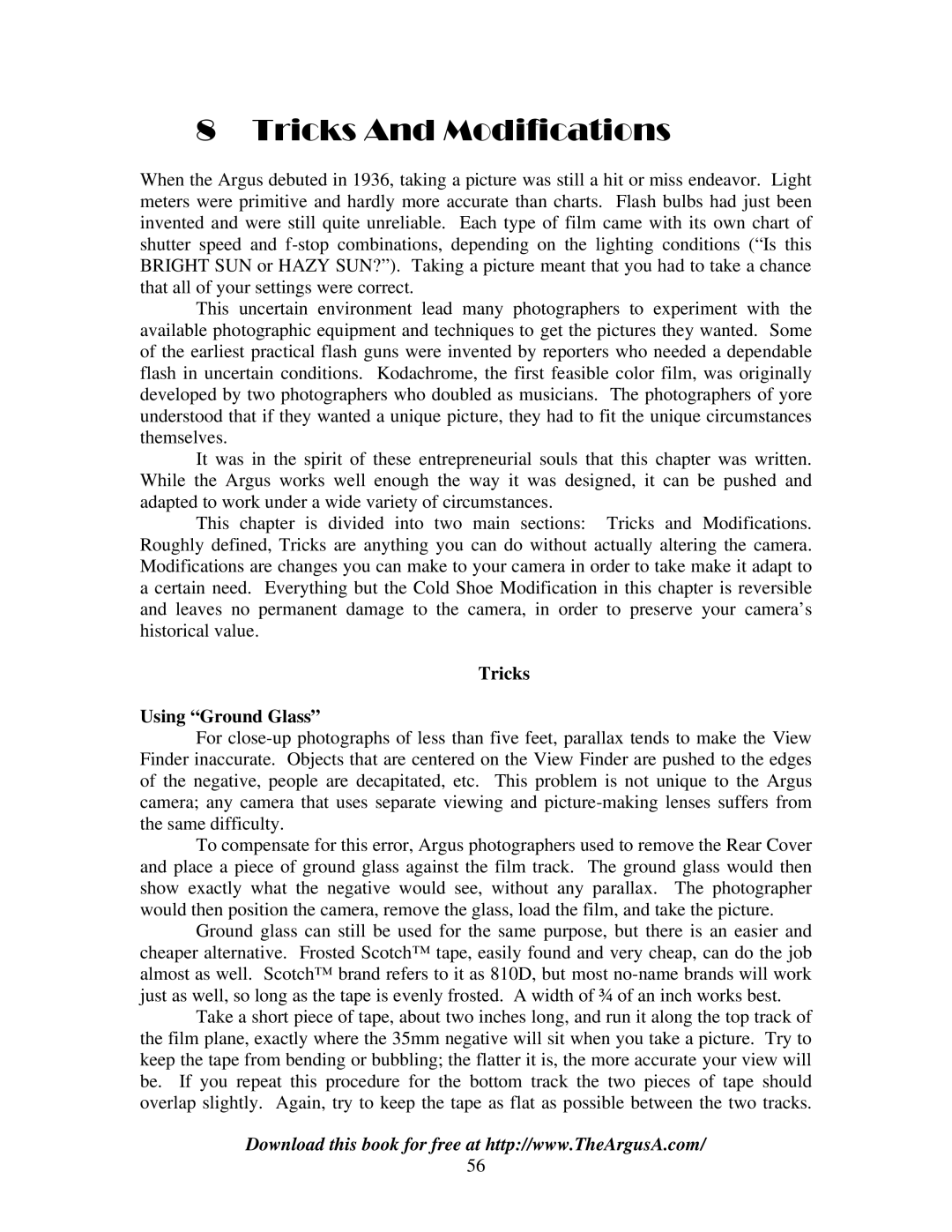8 Tricks And Modifications
When the Argus debuted in 1936, taking a picture was still a hit or miss endeavor. Light meters were primitive and hardly more accurate than charts. Flash bulbs had just been invented and were still quite unreliable. Each type of film came with its own chart of shutter speed and
This uncertain environment lead many photographers to experiment with the available photographic equipment and techniques to get the pictures they wanted. Some of the earliest practical flash guns were invented by reporters who needed a dependable flash in uncertain conditions. Kodachrome, the first feasible color film, was originally developed by two photographers who doubled as musicians. The photographers of yore understood that if they wanted a unique picture, they had to fit the unique circumstances themselves.
It was in the spirit of these entrepreneurial souls that this chapter was written. While the Argus works well enough the way it was designed, it can be pushed and adapted to work under a wide variety of circumstances.
This chapter is divided into two main sections: Tricks and Modifications. Roughly defined, Tricks are anything you can do without actually altering the camera. Modifications are changes you can make to your camera in order to take make it adapt to a certain need. Everything but the Cold Shoe Modification in this chapter is reversible and leaves no permanent damage to the camera, in order to preserve your camera’s historical value.
Tricks
Using “Ground Glass”
For
To compensate for this error, Argus photographers used to remove the Rear Cover and place a piece of ground glass against the film track. The ground glass would then show exactly what the negative would see, without any parallax. The photographer would then position the camera, remove the glass, load the film, and take the picture.
Ground glass can still be used for the same purpose, but there is an easier and cheaper alternative. Frosted Scotch™ tape, easily found and very cheap, can do the job almost as well. Scotch™ brand refers to it as 810D, but most
Take a short piece of tape, about two inches long, and run it along the top track of the film plane, exactly where the 35mm negative will sit when you take a picture. Try to keep the tape from bending or bubbling; the flatter it is, the more accurate your view will be. If you repeat this procedure for the bottom track the two pieces of tape should overlap slightly. Again, try to keep the tape as flat as possible between the two tracks.
Download this book for free at http://www.TheArgusA.com/
56
